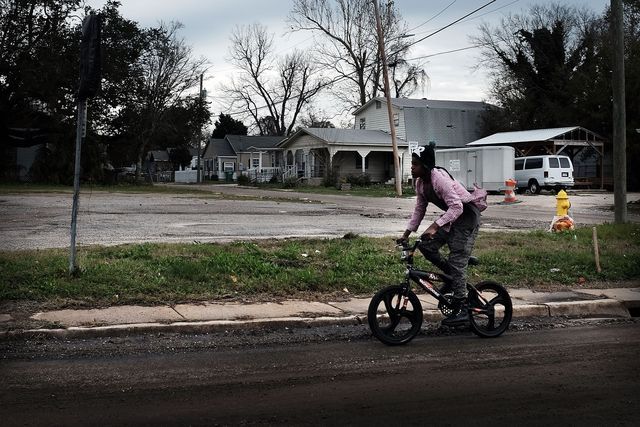
We're used to thinking about poverty as a measure of income: poor people make very little money, and as a result, they're unable to afford to buy the basics like food, housing, and health care. The U.S. Census Bureau decides each year what the income threshold is going to be to define the federal poverty line; in 2016, that threshold is around $16,000 per year for a family of two, and a little over $24,000 for a family of four.
But is income the only data point we should collect when we're trying to learn about poverty in America? Other countries like Bhutan, Colombia, Chile, Malaysia and Mexico all measure poverty with a multidimensional index — Mexico, for instance, looks at income alongside education, housing, health, social cohesion, and access to food. But every country is different, and a multidimensional poverty index should look different in a country where living in a house without electricity, a permanent floor or sanitation facilities isn't all that uncommon, compared to the United States, where many people in poverty have those things that in other places might be considered luxuries.
Advertisement

A new study in the journal Social Indicators Research proposes just such a multidimensional approach to looking at poverty in the U.S. It would lead to more accurate assessments, it argues, of whether the basic needs are being met within a household.
"The federal poverty line was set up during Lyndon Johnson's War on Poverty — that's how dated the poverty line is," says author Shatakshee Dhongde, an assistant professor in the School of Economics at Georgia Tech. "It's been updated with respect to inflation, but what hasn't changed is the notion of income, what you include in income, and the formula that was established back in the 1960's to tell whether families are able to meet their basic needs — that hasn't changed."
In the past few years, the Census Bureau has created a device to capture overall standard of living called the Supplemental Poverty Measure. It looks at a broader notion of income, and captures some parts of income the federal poverty line doesn't: expenses on childcare and commuting to work, for example. Dhongde and her co-author, Robert Haveman, professor emeritus at the University of Wisconsin-Madison Institute for Research on Poverty, argue that while this is helpful, it's not enough because it is still based entirely on income.
"We need to look beyond income," says Dhongde.
Dhongde and Haveman have defined poverty as "deprivation" of necessities rather than a fixed income level, suggesting a family is "multidimensionally deprived" when they are unable to meet their needs in two of six different dimensions:
• health
• education
• standard of living
• security
• social connections
• housing quality
They looked at data from the American Community Survey conducted by the U.S. Census Bureau, measuring almost 3 million observations per year, spanning the Great Recession in the U.S., from 2008 to 2013. This huge data set allowed them to look at depravation dimensions beyond income, and though their analysis found only a small difference between the income-based poverty rate (13.2 percent) during the recession and the multi-dimensional deprivation index (14.9 percent), they found there only a 6.6 percent overlap between the two groups. The two groups, therefore, were almost totally separate.
When it came to deprivation, the dimensions which were most common for Americans were lack of education, severe housing burden, and lack of health insurance. They also looked at deprivation by age group, and found young adults aged 18 to 24 face a lot of deprivations as they enter the job market. By race and ethnicity, it's fair to say that there's a stereotype in popular culture of the African-American population making up a large percentage of the poor in this country — incoming president Donald Trump frequently equates black America with inner cities and hellish living conditions, despite the variety of experiences in that community, for instance — but by this index, it turns out Asians and Hispanics deal with very high levels of deprivation as well. If you're looking at male- versus female-headed households, single male-headed households have one of the largest deprivation levels.
"These are the insights you get when you stop measuring people with just one yardstick," says Dhongde.
Advertisement
